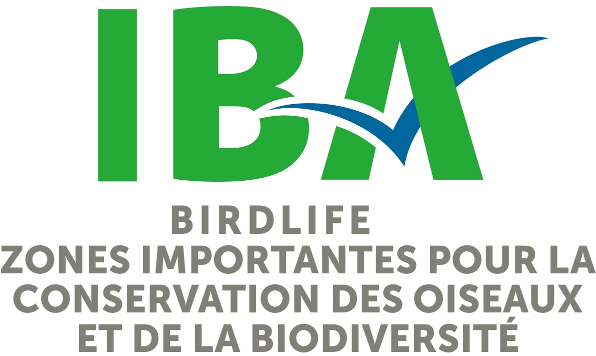Beaverhill Lake (AB001)
Tofield, Alberta
Description du site
Beaverhill Lake is located approximately 60 km southeast of Edmonton near the town of Tofield, Alberta. The site includes the waters of Beaverhill Lake (13,900 ha) and the Beaverhill Natural Area (410 ha). The Lake is strongly alkaline and shallow with a maximum depth of two to three m. The water levels fluctuate annually in response to precipitation. The shoreline is variable and includes shallow mudflats, narrow sandy beaches, and areas of dense emergent vegetation. The adjacent Beaverhill Natural Area has flat to gently rolling open grasslands with a mix of aspen groves and willow stands. Outside of the Natural Area habitats are comprised primarily of rangeland with some cultivated areas.
Oiseaux
Beaverhill Lake is an important waterfowl staging area (spring and fall) with more than 200,000 individuals regularly using the site each year. During spring migration, more than 150,000 geese stage here, including daily numbers of 50-75,000 Snow Geese (greater than 1% of the global population) and 50-100,000 Greater White-fronted Geese (approximately 6.3% to 7.9% of the mid-continent population). In fall, 40-70,000 dabbling ducks (mostly Mallards and Pintails) are also present. The Lake is also an important waterfowl moulting area with up to 25,000 moulting ducks being reported (1976 data). Sandhill Cranes also stage here in spring migration with 8,000 being recorded in late April, 1993.
In addition to waterfowl, Beaverhill Lake regularly supports substantial numbers of a variety of shorebirds. Intensive shorebird surveys in 1995 included two counts with over 50,000 individuals present (19 and 24 May). In total, 32 species of shorebirds were recorded during 1995. Single species high counts included 10,000 Red-necked Phalaropes, 10,000 Pectoral Sandpipers, 10,000 dowitcher spp., 7,800 Black-bellied Plover, 7,200 Semipalmated Sandpiper, and 1,000 American Avocet. Intensive shorebird survey data are available for only a few years (1995, 1987) and average numbers for most of these species may to be lower. Nonetheless, these numbers suggest that approximately 20% of the estimated North American Pectoral Sandpiper population, and almost 16% of the estimated North American Black-bellied Plover population may have been present at Beaverhill Lake during May of 1995.
The Beaverhill Bird Observatory has been monitoring landbird migration in the Natural Area at the southwestern corner of the lake since 1986. Since 1994, this monitoring has consisted of a standardized daily program of mist netting and censuses. The number and diversity of landbirds captured varies considerably from year to year. Good numbers (1,000 to 3,000) and diversity (39 to 50+ species) of landbird migrants are banded at the site each season, with the total number of individuals moving through the area being much higher. Some of the more common species included Yellow-rumped and Yellow Warbler.
Piping Plover is the only threatened species that nests at Beaverhill Lake. During the 1996 International Survey, six breeding pairs of this globally Vulnerable, nationally Endangered species were reported. During migration, Peregrine Falcons are also regularly observed.
Enjeux de conservation
The significance of Beaverhill Lake to migrating birds has been recognized by a variety of initiatives. In 1987 it was designated as a Wetland of International Importance under the Ramsar program. Also in 1987, the Beaverhill Natural Area was established. It includes Dekker Islands, Pelican Island and Lister Lake Area. These areas are protected under the Alberta Provincial Government's Wilderness Areas, Ecological Reserves and Natural Areas Act (1981). In May 1996, the Lake was designated as a Regional Reserve for migrating shorebirds under the WHRSN program. A number of initiatives are underway to limit disturbance to waterbirds. The area within 800m of the pelican nesting island has been designated as a seasonal sanctuary. Access is prohibited between 15 April to 15 September. An additional restricted area has been identified to protect staging waterfowl during the peak of their migration. This area includes the southern half of the lake and all areas within 800m of the edge of the water (southern half only). Hunting of game birds is prohibited until after 31 October in any year. Ducks Unlimited has also protected and enhanced approximately 820 ha of wetland and 225 ha of associated upland habitats around the Lake.
Numerous threats to the area have prompted the development of a conservation plan for the Beaverhill Lake IBA. Continuous drought, for example, has resulted in shallow, warmer waters which, in turn, has caused blooms of bluegreen algae and outbreaks of botulism – both harmful to waterbirds. As well, lower water levels have made Pelican Island accessible to predators, leading to the elimination of pelican and cormorant nesting sites. Landowners have also allowed cattle to graze in the natural area (once secured by fencing), and along the shorelines where the endangered Piping Plovers nest.
Catégories ZICO Habitats Usages Menaces Potencielles ou Existantes Status de Protection

